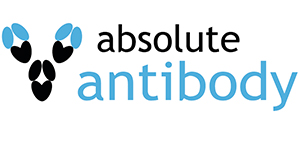Anti-CD105 (huRH105-1)
Anti-CD105 [huRH105-1], Recombinant, IgG kappa, Rabbit
SKU
ABAAb04017-23.0
Packaging Unit
100 μg
Manufacturer
Absolute Antibody
Availability:
loading...
Price is loading...
CloneID: huRH105-1
Antigen Long Description: The original mouse parental antibody RH105-1 was generated by intraperitoneal immunization of BALB/c VAF mice with rat CD105-expressing 300-19 cells. This antibody was synthetically engineered to mimic a binding specificity of the original RH105-1, by grafting the CDRs of the parental antibody onto human framework segments.
Buffer Composition: PBS with 0.02% Proclin 300.
Available Custom Conjugation Options: AP, HRP, Fluorescein, APC, PE, Biotin Type A, Biotin Type B, Streptavidin, FluoroProbes 647H, Atto488, APC/Cy7, PE/Cy7
Uniprot Accession No.: P17813
Specificity Statement: The antibody binds to human and rat endoglin.
Application Notes (Clone): This antibody was used for detection of CD105 expressed on Vero cell lines by flow cytometry (Kd = 0.024 nM). The ability of the antibody to induce apoptosis on HUVEC cells was measured. Results showed that treatment with the antibody induced apoptosis of up to 47% of HUVEC cells at a concentration of 0.25 μg/mL. Further, the antibody induced a greater percentage of cells to undergo apoptosis under hypoxic conditions. The binding affinity of the antibody and the antibody conjugated to SPDB-DM4 was assayed by flow cytometry. The value of the apparent dissociation constants were calculated Kd = 1.63 nM and 2.12 nM, respectively. Treatment of HUVEC cells with huRH105-l-SMCC-DMl completely reduced viability of HUVEC cells with an EC50 of 0.12 nM in in vitro cytotoxicity experiments, while treatment of HUVEC cells with huRH105-l-SPDB-DM4 completely reduced viability with an EC50 of 0.21 nM. The antibody bound to Rat Aortic Endothelial Cells (RAOEC) by flow cytometry analysis (Kd = 0.13 nM). The ability the conjugate antibodies to inhibit cell growth of RAOEC cells was measured using an in vitro cytotoxicity assay. Treatment with huRH105-l- SMCC-DM1 completely reduced viability of RAOEC cells with an EC50of 0.48 nM for huRH105-l-SMCC-DMl and 1.1 nM for huRH105-l-SPDB-DM4. Analysis of in vivo efficacy of huRH105-l-SMCC-DMl in combination with bevacizumab in A2780 and HCT116 rat xenograft models showed improved efficacy compared to the control experiment. Analysis of in vivo efficacy of huRH105-l-SMCC-DMl alone in an U87MG rat xenograft model showed improved efficacy compared to the control experiment (WO2012149412A2).
Antigen Long Description: The original mouse parental antibody RH105-1 was generated by intraperitoneal immunization of BALB/c VAF mice with rat CD105-expressing 300-19 cells. This antibody was synthetically engineered to mimic a binding specificity of the original RH105-1, by grafting the CDRs of the parental antibody onto human framework segments.
Buffer Composition: PBS with 0.02% Proclin 300.
Available Custom Conjugation Options: AP, HRP, Fluorescein, APC, PE, Biotin Type A, Biotin Type B, Streptavidin, FluoroProbes 647H, Atto488, APC/Cy7, PE/Cy7
Uniprot Accession No.: P17813
Specificity Statement: The antibody binds to human and rat endoglin.
Application Notes (Clone): This antibody was used for detection of CD105 expressed on Vero cell lines by flow cytometry (Kd = 0.024 nM). The ability of the antibody to induce apoptosis on HUVEC cells was measured. Results showed that treatment with the antibody induced apoptosis of up to 47% of HUVEC cells at a concentration of 0.25 μg/mL. Further, the antibody induced a greater percentage of cells to undergo apoptosis under hypoxic conditions. The binding affinity of the antibody and the antibody conjugated to SPDB-DM4 was assayed by flow cytometry. The value of the apparent dissociation constants were calculated Kd = 1.63 nM and 2.12 nM, respectively. Treatment of HUVEC cells with huRH105-l-SMCC-DMl completely reduced viability of HUVEC cells with an EC50 of 0.12 nM in in vitro cytotoxicity experiments, while treatment of HUVEC cells with huRH105-l-SPDB-DM4 completely reduced viability with an EC50 of 0.21 nM. The antibody bound to Rat Aortic Endothelial Cells (RAOEC) by flow cytometry analysis (Kd = 0.13 nM). The ability the conjugate antibodies to inhibit cell growth of RAOEC cells was measured using an in vitro cytotoxicity assay. Treatment with huRH105-l- SMCC-DM1 completely reduced viability of RAOEC cells with an EC50of 0.48 nM for huRH105-l-SMCC-DMl and 1.1 nM for huRH105-l-SPDB-DM4. Analysis of in vivo efficacy of huRH105-l-SMCC-DMl in combination with bevacizumab in A2780 and HCT116 rat xenograft models showed improved efficacy compared to the control experiment. Analysis of in vivo efficacy of huRH105-l-SMCC-DMl alone in an U87MG rat xenograft model showed improved efficacy compared to the control experiment (WO2012149412A2).
| SKU | ABAAb04017-23.0 |
|---|---|
| Manufacturer | Absolute Antibody |
| Manufacturer SKU | Ab04017-23.0 |
| Package Unit | 100 μg |
| Quantity Unit | STK |
| Reactivity | Human, Rat (Rattus) |
| Clonality | Recombinant |
| Application | Flow Cytometry, In Vivo Assay |
| Isotype | IgG kappa |
| Host | Rabbit |
| Product information (PDF) | Download |
| MSDS (PDF) | Download |

 Deutsch
Deutsch







